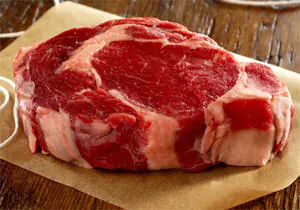In this article we will talk again about Construction Materials for our body. About something without which our muscles cannot grow. As you probably already realized, we will talk about proteins... What place do proteins occupy in the food chain of living organisms? What are daily protein intake for men and women with varying degrees of physical activity? What's happened protein deficiency in the human body, and how does it negatively affect his life? We will examine all these questions in detail in this review, and also list the main animal and plant protein sourcescontained in the products of our daily diet...
Have you ever wondered: what is life? Maybe this definition will surprise you a little, but life is nothing more than form of protein existence. Let's try to explain... Protein is:
- I) our muscles,
- II) the entire spectrum of connective tissues (cartilage, ligaments, tendons),
- III) it is also part of our bone tissue.
Epigraph: “Life is not the same without protein.”
Our proteins consist of special varieties of protein:
- a) hair,
- b) nails,
- c) teeth
- d) skin.
Also, some very important proteins are formed from protein molecules. hormones, on the presence and quantity of which our well-being, mood, health and the appearance of a person. Most enzymes also include protein fragments, on which the quality and speed of physiological and biochemical processes occurring in our body depend.
Content- All kinds of protein sources of different origins.
- What does excess and deficiency of protein lead to in the human body?
- The table shows the recommended protein intakes for adults (men and women). It should be noted that 1 g of protein provides 4.1 kcal.
All kinds of protein sources of different origins.
The main sources of protein for our body are not only animal products (such as: a) meat, b) fish, c) eggs, d) dairy products), but also plant foods, for example, legumes (such as: a) beans , b) peas, c) soybeans, d) peanuts, containing up to 22-23% proteins by weight), especially nuts and mushrooms. However The maximum protein content is:
- in cheese (up to 25%),
- meat products (pork 8-15%, lamb 16-17%, beef 16-20%),
- poultry (21%),
- fish (13-21%),
- eggs (13%) and cottage cheese (14%).
What does excess and deficiency of protein lead to in the human body?
In previous posts on our fitness site it was already mentioned that excess protein in the body, which it does not use as fuel resources and as energy for functioning, are stored in reserve, for a “rainy day,” causing excess body weight. However lack of protein It is also very harmful, as it disrupts many vital processes.
If there is not enough protein in the diet, then an adult experiences a loss of strength, he performance decreases, and the body is less resistant to all kinds of viruses and infections. If a child experiences a lack of protein in the diet, then he is severely delayed in development and grows poorly, since protein is the key "construction material" our mother nature.
Protein deficiency causes brittle nails and split ends. In this case, you are unlikely to be helped by super-strengthening nail products and expensive shampoos, the manufacturers of which promise that these products will make your hair thick and healthy in one week. Flabby, dry and lifeless skin almost always indicates an acute deficiency of protein in the body. The same thing is a source of pain in the joints and ligamentous-tendon system during significant physical activity. Advertising very often mentions a substance such as collagen, which is a guarantee of beautiful appearance. Only a few know that collagen is a special type of protein, thanks to which connective tissues are formed, and the skin has a healthy and radiant appearance. Finally, you will not be able to form a beautiful figure (due to the development of muscles in the places you need) without properly supplying your body with “building material”, that is, protein. It is necessary to combat these problems from the inside, that is, to ensure sufficient intake of protein compounds into the body.
But how to properly organize protein nutrition for full saturation body? It's very simple:
- Try to always adhere to the recommended daily intake shown in the table below;
- Make sure that your body is constantly supplied with protein throughout the day, evenly.
Naturally, for people who regularly engage in such strength sports disciplines: like bodybuilding, weightlifting, powerlifting, fitness and other variations of “iron sports”, this norm should be much higher, in view of not just ordinary construction, but active forced, targeted hyper-construction - I think you caught the essence of the moment and the train of my thoughts...
The table shows the recommended protein intakes for adults (men and women). It should be noted that 1 g of protein provides 4.1 kcal.
|
Table. Recommended protein intakes for adults |
||||
|
Type of human activity |
Total, g |
as well as animals, g |
Total, g |
as well as animals, g |
|
FLOOR: |
Men: |
Women: |
||
|
sedentary work |
75 |
25-50 |
70 |
25-45 |
|
moderately mobile work |
85 |
30-60 |
80 |
25-55 |
|
hard work |
95 |
30-60 |
90 |
30-60 |
|
pregnant women (second half of pregnancy) |
95 |
45-65 |
||
|
breastfeeding |
100 |
55-75 |



